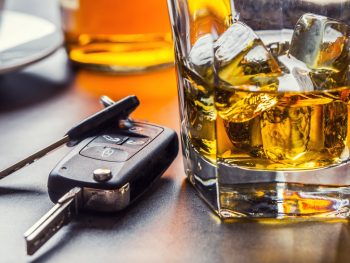Much more action needed on drink-driving as crashes rise 3%
The number of drink-drive crashes in the UK has risen 3% in latest figures; prompting renewed calls for a smarter package of measures from the Government.

The total number of crashes where at least one driver was over the alcohol limit rose by 3% to 5,890 in 2018
Latest Department for Transport (DfT) figures show the total number of crashes where at least one driver was over the alcohol limit rose by 3% to 5,890 in 2018 – the last year for which figures are available. This is an average of around 16 crashes a day.
The final estimates on personal injury drink drive accidents in Great Britain for 2018 also indicate that 240 people died in crashes where at least one driver was over the drink-drive limit, down from the central estimate of 250 for 2017 but similar to levels seen since 2010.
Furthermore, an estimated 8,680 people were killed or injured when at least one driver was over the drink-drive limit, an increase of 1% from 8,600 in 2017. That means on average more than 23 people a day were killed or injured as a result of drinking and driving in 2018.
The AA also said that the statistics point to a worrying likelihood that women caught up in such accidents will be killed or injured.
“Statistics show that, although women are involved in 20% of drink-drive accidents, they make up 34% of casualties in these incidents. For men, it is 80% involvement in accidents but 66% in related casualties,” outlined Jack Cousens, head of roads policy for the AA.
“Many of these women will be passengers and the AA has long warned parents to be wary of who might be driving cars their daughters, and sons for that matter, are passengers in.
He added: “Ironically, one of the few good things to come out of the coronavirus epidemic should be a big drop in drink-drive road accidents and casualties. However, that shouldn’t be allowed to hide unsettling trends related to this type of incident.”
The stagnation on progress in the latest figures has led to renewed calls from road and safety organisations for much more to be done to curb the plague of drink-driving.
RAC head of policy Nicholas Lyes commented: “The Government has indicated it is looking at the possibility of introducing alcolock technology to prevent reoffenders from getting behind the wheel, so we’d like to know what progress is being made here. This, together with more police on our roads conducting breathalyser tests, could go a long way to cutting drink-drive deaths in the future.”
IAM RoadSmart also said the figures show drink-drivers are not getting the message and has reiterated the n eed for a smarter package of measures from the Government to tackle the issue. These include a further lowering of the drink-drive limit in England and Wales to match Scotland, wider use of drink-drive rehabilitation courses, longer running high-profile education and enforcement campaigns and also, following the example of Scotland, by seizing the vehicles of repeat offenders.
Neil Greig, director of policy and research at the road safety charity, said: “Once again progress on reducing the toll of death and injuries from drink-driving has stalled.
“There is no one simple answer to reducing these figures, but at IAM RoadSmart we believe a much smarter package of measures is needed from the Government including a lower drink-drive limit to reinforce good behaviour, fast-track of evidential roadside testing machines to release police resources and tailored approaches to help drivers with alcohol problems.
“Rehabilitation courses work and we believe all those convicted of drink-driving should be sent on one automatically rather than having to opt in. More use of alcohol interlocks – which require the driver to blow into a mouthpiece on the device before starting or continuing to operate the vehicle – and extra penalties such as vehicle forfeiture, as used in Scotland, could all be part of a more joined-up approach to the problem.”
Overall drink-driving accounted for 5% of collisions in Great Britain. The highest number of casualties, nearly 7%, due to drink-driving occurred in Wales, followed by England and Scotland at around 5% each. Regionally, in England, casualty rates varied from nearly 8% in the East Midlands to nearly 4% in Greater London.
In 2018, 80% of drink-drive related casualties involved male drivers or riders. Almost two thirds of drink-drive casualties (63%) are aged 25 to 59 but around a quarter (24%) involve people aged 16-24. In both age categories, the casualty rate is higher in drink-drive related collisions than other collisions types.
Neil Greig concluded: “Hard-core drink drivers are simply not getting the message, and these figures will not improve until policy changes.”
The full DfT drink-driving figures can be found here.












